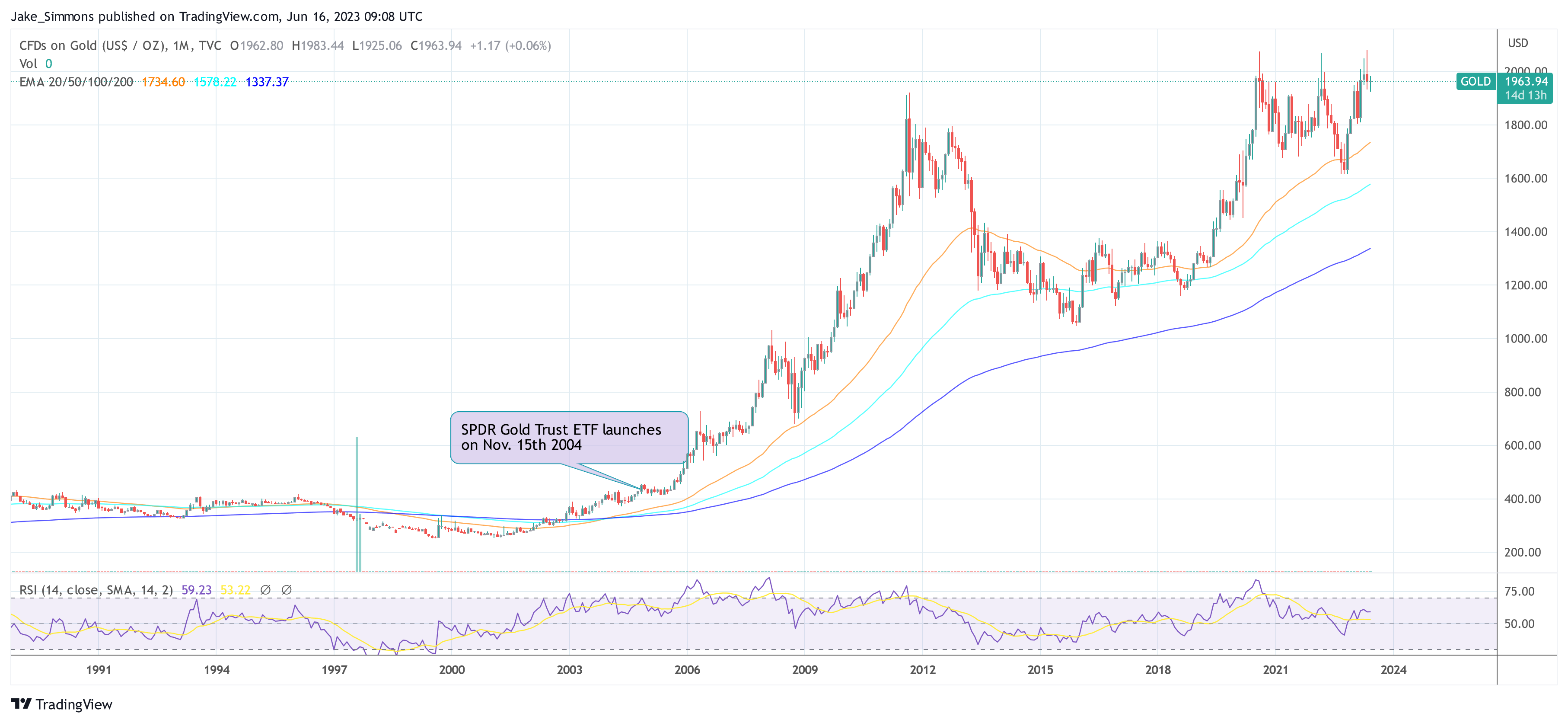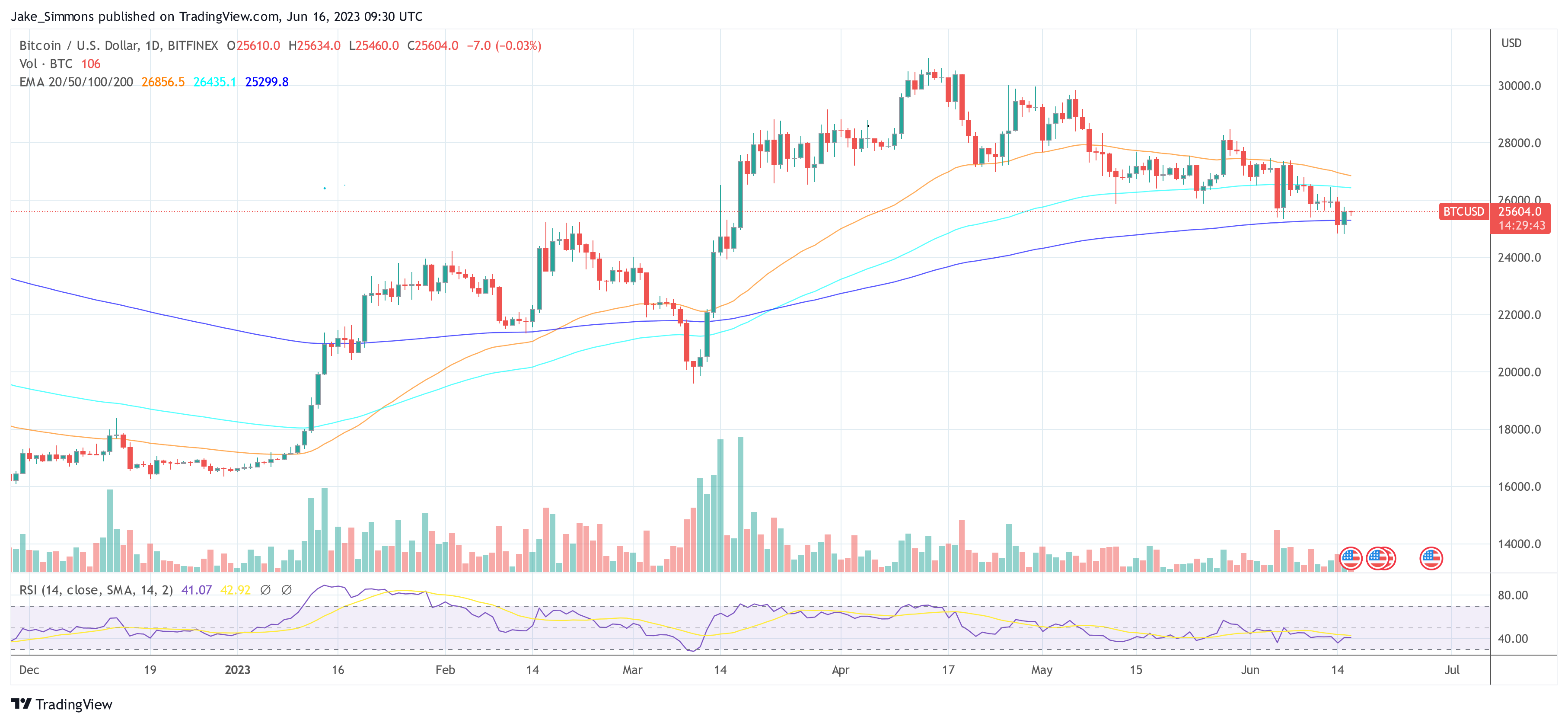The filing of BlackRock, the world’s largest asset manager, for approval of a Bitcoin spot ETF with the US Securities and Exchange Commission (SEC) is the biggest story in the crypto market today. Numerous experts are extremely optimistic that an approval of the first Bitcoin spot ETF in the US will be a huge bullish event, attracting huge amounts of new capital and sparking another bull run.
But where does this theory come from? Bitcoin is often referred to as the digital gold of the 21st century, so it makes sense to look at the history of gold and the first gold-based spot ETF.
Why the BlackRock Bitcoin ETF Would Be So Bullish
The first thing to notice is that BlackRock has applied for a spot ETF and not a Futures ETF. The SEC has already approved a number of Bitcoin Futures ETFs that hold Bitcoin futures contracts on the CME. These are currently traded on the US stock markets but have relatively low popularity. And this has its reasons, primarily the so-called “drag”, such as Scimitar Capital explains.
Drag refers to the underperformance of a fund attempting to replicate the performance of a given underlying asset and is a long-term result of regular portfolio rebalancing. To track the spot price, BITO, the largest bitcoin futures ETF, holds 2/3 into the first month’s future and 1/3 into the following month.
However, this “roll-over” is costly due to transaction fees, slippage, and because last-month futures usually trade in BTC at a premium over the first month (“contango”). For this reason, futures ETFs are not a good long-term investment for retail traders and are therefore unpopular.
A Bitcoin spot ETF does not have these disadvantages. “This is why physically backed ETFs like GLD and IAU for gold have a combined 90B AUM, while futures backed ETFs like BITO and USO have a paltry 1.6B,” says Scimitar Capital.
The first gold ETF, the SPDR Gold Trust ETF (GLD), was listed on the NYSE on November 15, 2004 and revolutionized gold trading. Before GLD came on the market, it was possible to invest in gold in the form of bars, coins, certificates and shares of gold mining companies.
The exchange-traded fund made investing in precious metals a breeze and eliminated the hassles of shipping and vaults. The same revolution could come to Bitcoin through a Bitcoin spot ETF. Retail investors could hold Bitcoin for the long term through the ETF without worrying about custody and private keys.
And the revolution in gold was also felt in the price. While the price of gold was still below $450 an ounce in November 2004, gold rose rapidly in the years that followed.

In September 2011, less than seven years after its launch, gold was trading at $1920 an ounce. Many economic factors have influenced the price of gold, but the launch of ETFs has certainly played an influential role in attracting global institutional funds to the market.
The digital gold of the 21st century, Bitcoin, may yet experience this price explosion if history repeats itself.
At the time of writing, BTC was trading at USD 25,604, reclaiming the 200-day EMA (blue line).

Featured image from iStock, chart from TradingView.com

